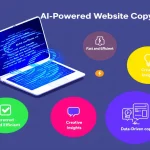Is this tool helpful?
How to Use the Brand Identity Mood Board Generator
To create a professional brand identity mood board using our generator, follow these step-by-step instructions:
Step 1: Enter Brand Information
- Brand Name: Input your company or product name. Examples: “Green Earth Organics” or “Velocity Fitness.”
- Target Audience: Define your audience demographics and characteristics. Example: “Health-conscious millennials aged 28-40 with disposable income” or “Tech-savvy entrepreneurs aged 35-50 seeking innovative solutions.”
Step 2: Define Brand Elements
- Brand Values: List 3-5 core values that represent your brand’s essence. Examples: “Authenticity, Environmental Responsibility, Community Impact” or “Innovation, Reliability, Excellence.”
- Key Challenges: Outline specific challenges your brand needs to address. Example: “Building trust in a saturated wellness market” or “Differentiating from traditional competitors.”
Step 3: Visual Preferences
- Color Preferences: Specify preferred color schemes (optional). Example: “Nature-inspired greens and browns” or “Bold purples and silver.”
- Visual Style: Define your desired aesthetic (optional). Example: “Contemporary eco-friendly” or “High-tech minimalist.”
Understanding Brand Identity Mood Boards
A brand identity mood board is a strategic visual tool that combines colors, typography, imagery, and design elements to create a cohesive representation of your brand’s personality and values. It serves as a visual roadmap for maintaining brand consistency across all marketing materials and touchpoints.
Core Components of a Brand Mood Board
- Color palette and color psychology
- Typography selections and hierarchy
- Image style and photography direction
- Texture and pattern elements
- Brand personality indicators
- Design elements and iconography
Benefits of Using the Brand Identity Mood Board Generator
1. Time and Resource Efficiency
Our generator streamlines the mood board creation process, reducing the time typically spent on manual design exploration and iteration. This efficiency allows businesses to focus on implementation rather than initial conceptualization.
2. Strategic Brand Alignment
The tool ensures all visual elements align with your brand strategy by considering:
- Target audience preferences and behaviors
- Market positioning and competitive differentiation
- Brand values and mission alignment
- Communication objectives and tone
3. Consistency in Brand Expression
By generating a comprehensive mood board, you establish a clear visual framework that maintains brand consistency across:
- Digital and print marketing materials
- Social media presence
- Website design and user interface
- Product packaging and physical touchpoints
Solving Brand Identity Challenges
Challenge 1: Brand Differentiation
The generator helps brands stand out by:
- Analyzing market trends and competitive visual landscapes
- Identifying unique visual opportunities
- Creating distinctive color combinations and design elements
Challenge 2: Target Audience Connection
Our tool ensures visual elements resonate with your specific audience by:
- Incorporating demographic preferences
- Aligning with cultural and social values
- Adapting to generational design preferences
Practical Applications and Use Cases
Case Study 1: Startup Brand Development
A technology startup used the generator to create a mood board that:
- Reflected innovation and forward-thinking
- Incorporated modern, clean design elements
- Established a professional yet approachable visual identity
Case Study 2: Brand Refresh Project
An established retail brand utilized the tool to:
- Modernize their visual identity while maintaining brand recognition
- Update color palettes for digital-first experiences
- Integrate new design trends while preserving brand heritage
Frequently Asked Questions
Q: How many brand values should I include?
We recommend including 3-5 core brand values to maintain focus and clarity in your visual identity. This number allows for comprehensive coverage while preventing dilution of your brand message.
Q: Can I update my mood board later?
Yes, you can generate multiple mood boards and iterate on your brand identity as your business evolves. We recommend reviewing and refreshing your mood board annually or when significant brand changes occur.
Q: Should I include competitor colors in my preferences?
While it’s important to be aware of competitor branding, we recommend focusing on colors that authentically represent your brand values and differentiate you in the market rather than mimicking competitors.
Q: How do I implement the mood board across my marketing materials?
Use the generated mood board as a reference guide for all design decisions. Share it with your design team, marketing partners, and other stakeholders to ensure consistent implementation across all brand touchpoints.
Q: Can I combine different visual styles?
Yes, you can blend different visual styles to create a unique brand aesthetic. However, ensure the combination remains cohesive and aligns with your brand values and target audience preferences.
Q: How specific should my target audience description be?
Provide detailed demographic and psychographic information about your target audience, including age range, interests, behaviors, and lifestyle preferences. This specificity helps generate more accurate and effective mood boards.
Q: What if I don’t have color preferences?
The generator can suggest color palettes based on your brand values, target audience, and industry if you don’t have specific color preferences. These suggestions will be psychologically aligned with your brand objectives.
Important Disclaimer
The calculations, results, and content provided by our tools are not guaranteed to be accurate, complete, or reliable. Users are responsible for verifying and interpreting the results. Our content and tools may contain errors, biases, or inconsistencies. We reserve the right to save inputs and outputs from our tools for the purposes of error debugging, bias identification, and performance improvement. External companies providing AI models used in our tools may also save and process data in accordance with their own policies. By using our tools, you consent to this data collection and processing. We reserve the right to limit the usage of our tools based on current usability factors. By using our tools, you acknowledge that you have read, understood, and agreed to this disclaimer. You accept the inherent risks and limitations associated with the use of our tools and services.







